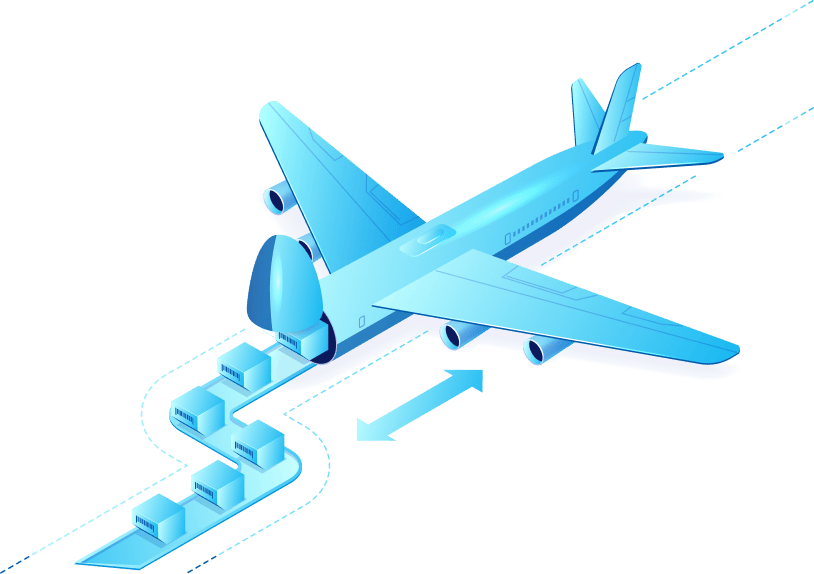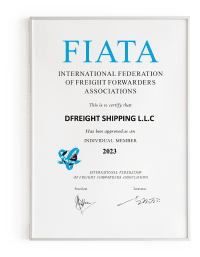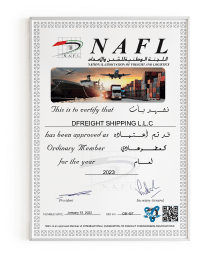Air Freight to Australia
Air Freight to Australia
Fast, Reliable, and Efficient Air Freight to/from Australia
DFreight Air Freight Service is your top choice for swift and dependable air cargo shipping to/from Australia. For a variety of commodities, including perishable goods, healthcare supplies, electronics, machinery, or anything that demands fast delivery from Australia to the UAE and vice versa, we’ve got you covered. With years of expertise, comprehensive solutions, a commitment to on-time delivery, cutting-edge technology, top-notch security, competitive pricing, and a global reach, we’re here to make your airfreight experience seamless and worry-free. Trust DFreight for excellence in air shipping and submit your inquiry right away to receive the best competitive prices for your air cargo to/from Australia.

Australia Exports and
Imports
The top exports of Australia are Iron Ore, Coal Briquettes, Petroleum Gas, Gold, and Wheat, exporting mostly to China, Japan, South Korea, India, and Chinese Taipei.
Market Update
According to OEC, in 2021, Australia was the number 13 economy in the world in terms of GDP, the number 20 in total exports, the number 24 in total imports, the number 12 economy in terms of GDP per capita and the number 82 most complex economy according to the Economic Complexity Index.
Australia exported US$2.49 Billion during 2021 to the United Arab Emirates and imported US$1.06 Billion during 2021 from the UAE, according to the Trading Economics database.
The Australia–UAE freight market looks set to be a very buoyant market in 2023, with air and ocean freight in particular providing considerable opportunity for future development. The rise of e–commerce in the UAE has contributed to increased demand for freight services between the two countries. In addition, the strong trade relationship between the countries provides a sound foundation on which to build a successful freight route. The combination of an increase in e–commerce shipping and a solid trade relationship between Australia and the UAE means that the Australia–UAE freight market looks set to be an enviable success come 2023.
Banned Products
Importing certain types of products into Australia is either restricted or completely banned due to safety, health, national security, and humanitarian interests. Products that are banned from importing into Australia include items made from threatened or endangered species, performance–enhancing drugs, explosives, any type of weapons, or outdated or unsafe products. In addition, certain country–specific products, may be prohibited from being imported into the country. It is important to check with specialized agencies before attempting to import any of these prohibited items.


Documents & Customs Clearance
One thing to take into account when exporting cargo internationally is customs clearance. You must be aware of the customs clearance regulations of the destination countries when shipping cargo from Australia.
The following documentation must be given to local customs for international shipments by the supplier, consignee, or intermediary:
– A commercial invoice
– A packing list
– A bill of lading
– A certificate of origin
Shipping Different Commodities from/to Australia
Break Bulk Cargo: All You Need to Know
How to Ship Perishable Goods Safe and Sound
Importing Cosmetics to UAE: A Comprehensive Guide
Major Air Cargo Port
-
Italy
Germany
United Kingdom
Netherlands
France
Turkey
Spain
Denmark
Switzerland
Czech Republic
Hungary
Poland
Romania
Greece
Portugal
Slovakia
Sweden
Ireland
-
China
India
Taiwan
Hong Kong
Japan
Singapore
South Korea
Malaysia
Qatar
Indonesia
Saudi Arabia
Thailand
Bangladesh
Lebanon
Kuwait
-
Uganda
Congo
Egypt
Rwanda
Kenya
South Africa
Morocco
Algeria
-
-
-


We consolidate cargo from Germany, Belgium, France, Luxembourg, and nearby cities to Amsterdam, then ship it directly to Dubai.
Certificates & Memberships




- Stress-Free Documentation We simplify the paperwork process, making it easy for you to focus on what matters most – your shipment.
- Clear Cost Breakdown Our pricing is straightforward, with a detailed breakdown so you can see exactly where your money goes.
- Dedicated Support We’re just a click away. Your dedicated support team is there to address any questions or concerns promptly.
- Live Shipment Tracking Easily follow your ocean and air freight shipments 24/7 with real-time tracking. No more unexpected delays.
Ship Your Cargo with Ease
Get Started Today!
Why Choose Consolidated Air Freight?
Guaranteed Space
Secure your cargo space without worries.
Reliable Scheduling
Count on our reliable predictive schedules
Nationwide Collections
We pick up your cargo throughout Benelux and Germany
Regional Trucking
Benefit from local trucking within Europe and GCC
Competitive Pricing
Enjoy market-competitive air freight rates
Fast Delivery
Rapid and secure shipping for time-sensitive items
Regional Trucking
Benefit from local trucking within Europe and GCC
Competitive Pricing
Enjoy market-competitive air freight rates
Fast Delivery
Rapid and secure shipping for time-sensitive items
Guaranteed Space
Secure your cargo space without worries.
Reliable Scheduling
Count on our reliable predictive schedules
Nationwide Collections
We pick up your cargo throughout Benelux and Germany
Any Questions?
Reach out to us, and our experts will work with you to discover the tailored solution you need.





 Germany
Germany Netherlands
Netherlands Luxemburg
Luxemburg Belgium
Belgium





